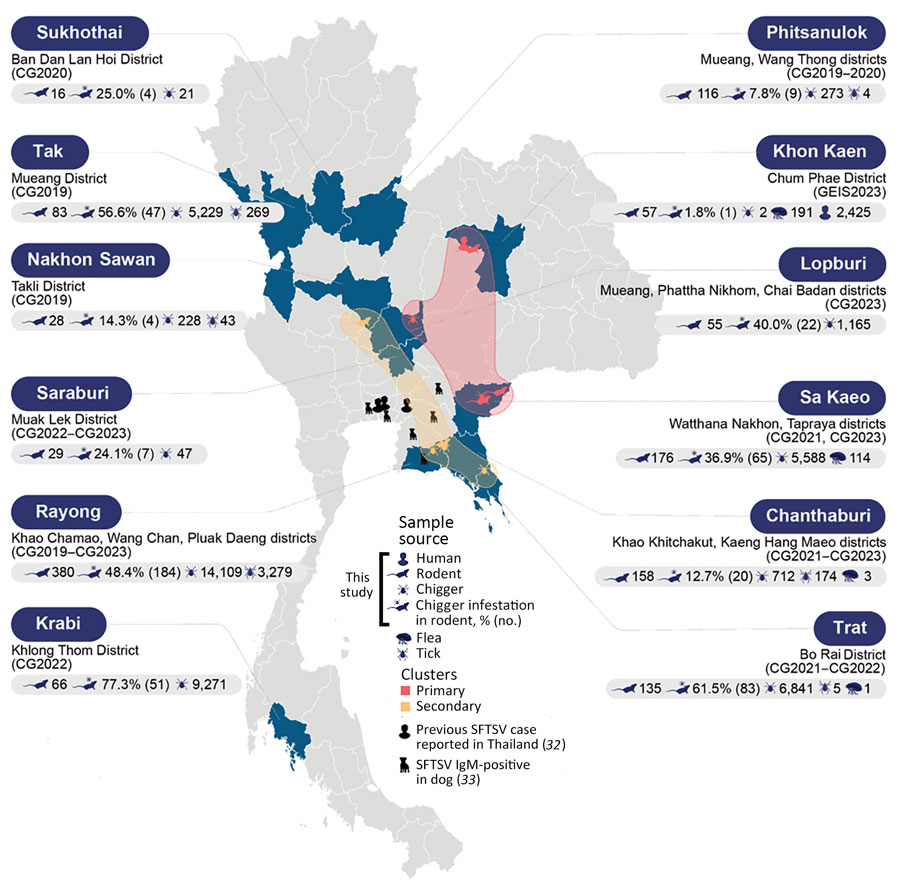Volume 30, Supplement—October 2024
SUPPLEMENT ISSUE
Articles
Comprehensive Surveillance of Severe Fever with Thrombocytopenia Syndrome Virus in Patients with Acute Febrile Illness, Wild Rodents, and Trombiculid Larval Mites, Thailand
Figure 1

Figure 1. Geospatial clustering of SFTSV, Thailand, 2015–2021. Blue areas on the map represent the surveillance locations in this study. Icons indicate the types of host species and chiggers that tested positive for SFTSV. Data were consolidated to include previous reports of locations where SFTSV-positive patients and dogs were identified, aligning with the current locations of positive samples. Clusters were determined using the K-means clustering method. Primary clusters, highlighted in red, denote regions with a high overall prevalence of SFTSV across all hosts or are considered high-risk areas. Secondary clusters, highlighted in yellow, indicate areas with potential transmission dynamics, particularly involving animal hosts. SFTSV, severe fever with thrombocytopenia syndrome virus.